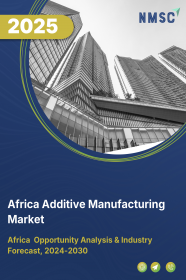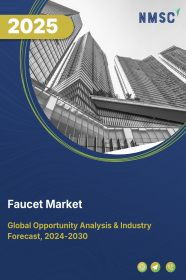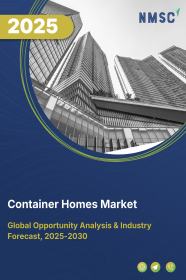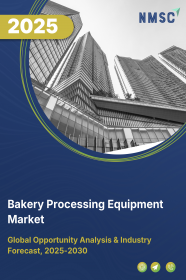
Africa Additive Manufacturing Market by Type (Desktop 3D Printer and Industrial 3D Printer), by Technology (Stereolithography, Fused Deposition Modeling, Selective Laser Sintering, Direct Metal Laser Sintering, Polyjet Printing, Inkjet Printing, Electron Beam Melting, Laser Metal Deposition, Digital Light Processing, Laminated Object Manufacturing, and Other Technology), by Component (Hardware, Software, and Services), and Others – Opportunity Analysis and Industry Forecast, 2024–2030
Industry: Construction & Manufacturing | Publish Date: 14-Feb-2025 | No of Pages: 271 | No. of Tables: 216 | No. of Figures: 161 | Format: PDF | Report Code : CM676
Africa Additive Manufacturing Market Overview
Africa Additive Manufacturing Market size was valued at USD 71.09 million in 2023, and is predicted to reach USD 128.7 million by 2030, at a CAGR of 7.2% from 2024 to 2030. In terms of volume, the market size was 13 thousand units in 2023, and is projected to reach 44 thousand units by 2030, with a CAGR of 17.4% from 2024 to 2030.
The additive manufacturing (AM) market, also known as additive layer manufacturing (ALM) or three-dimensional (3D) printing, is a global industry focused on developing, manufacturing, and distributing technologies and materials for constructing three-dimensional objects layer by layer from digital models. Serving diverse sectors including aerospace, automotive, healthcare, and consumer goods, this market offers advanced solutions for prototyping, production, and customized manufacturing requirements.
AM is highly prized for its ability to create intricate and customized components while minimizing material waste, leading to substantial cost savings and environmental benefits. A key characteristic of this market is its diverse range of printing technologies, such as stereolithography (SLA), selective laser sintering (SLS), and fused deposition modeling (FDM), each designed to meet specific industry needs and applications. Additionally, AM's capability for rapid prototyping accelerates product development cycles, enabling businesses to innovate and bring products to market more swiftly than traditional manufacturing methods.
Rise in Government Initiatives Towards Development of 3D Printing Accelerates the Growth of the Market
The government's proactive initiatives to integrate 3D printing into the construction sector in the region is accelerating market growth by promoting innovation, reducing construction costs, and addressing housing shortages. These initiatives involve substantial investments in research and development, strategic partnerships with technology companies, and the implementation of pilot projects showcasing the practical benefits of 3D printing technology.
For instance, in January 2023, the government launched a landmark 3D Construction Printing project aimed at constructing sustainable human settlements. This collaboration between the Department of Science and Innovation and the University of Johannesburg aims to tackle housing shortages and enhance construction efficiency.
By establishing supportive regulatory frameworks conducive to the adoption of advanced construction technologies, the government is creating an environment that fosters the growth of the 3D printing market in South Africa.
Rapid Expansion of Manufacturing Industry Propels the Market Growth
The rapid growth of the manufacturing sector is fueling the Africa additive manufacturing market expansion in the region. The region is witnessing increased demand for innovative production techniques that enhance efficiency and competitiveness. AM, renowned for its ability to streamline production processes, reduce costs, and facilitate product customization, is gaining traction among Nigerian manufacturers.
According to the latest World Bank report, Nigeria's manufacturing sector grown significantly, reaching USD 64.25 billion in 2022. This robust growth is propelling the additive manufacturing market by stimulating demand for cutting-edge production technologies and fostering local adoption of advanced manufacturing techniques.
High Initial Investment Hinders the Market Growth
The significant initial investment needed for AM equipment, materials, and training represents a major barrier to market expansion. This financial commitment presents a significant challenge, especially for smaller businesses, restricting their ability to enter or scale within the market.
Moreover, ongoing costs associated with materials and training compound the financial burden. As a result, numerous businesses hesitate to adopt AM technology due to these financial hurdles, ultimately limiting the prospects of the Africa additive manufacturing market growth.
Integration of Artificial Intelligence (AI) in Additive Manufacturing Presents Lucrative Opportunity for Market Expansion
Integrating artificial intelligence (AI) into additive manufacturing (AM) is anticipated to expand the 3D printing market by refining production processes, enhancing product design capabilities, and facilitating the creation of intricate and personalized objects. AI integration enables businesses to analyze extensive datasets gathered during printing, such as material properties, printing parameters, and environmental conditions. This analysis helps identify patterns, optimize settings, and predict potential defects, thereby improving printing precision and reducing material waste.
Competitive Landscape
The prominent key players operating in Africa additive manufacturing industry include Desktop Metal Inc., Markforged, Colibrium Additive (GE Aerospace), HP Inc., Kemtek, Voxeljet AG, Lithoz GmbH, Nano Dimension, Akhani 3D (Pty) Ltd., Proto Labs, Inc, EOS GmbH, Formlabs, Rapid 3D, Taito 3D, Trumpf and others.
Africa Additive Manufacturing Market Key Segments
By Type
-
Desktop 3D Printer
-
Industrial 3D Printer
By Technology
-
Stereolithography
-
Fused Deposition Modeling
-
Selective Laser Sintering
-
Direct Metal Laser Sintering
-
Polyjet Printing
-
Inkjet Printing
-
Electron Beam Melting
-
Laser Metal Deposition
-
Digital Light Processing
-
Laminated Object Manufacturing
-
Other Technology
By Component
-
Hardware
-
Software
-
Design Software
-
Inspection Software
-
Printer Software
-
Scanning Software
-
-
Services
By Application
-
Prototyping
-
Tooling
-
Functional Parts
By End User
-
Desktop Additive Manufacturing
-
Educational Purpose
-
Fashion & Jewellery
-
Objects
-
Dental
-
Food
-
Other Desktop
-
-
Industrial Additive Manufacturing
-
Automotive
-
Aerospace & Defense
-
Healthcare
-
Consumer Electronics
-
Power & Energy
-
Other Industrial
-
Key Players
-
Desktop Metal Inc.
-
Markforged
-
Colibrium Additive (GE Aerospace)
-
HP Inc.
-
Kemtek
-
Voxeljet AG
-
Lithoz GmbH
-
Nano Dimension
-
Akhani 3D (Pty) Ltd.
-
Proto Labs, Inc
-
EOS GmbH
-
Formlabs
-
Rapid 3D
-
Taito 3D
-
Trumpf
REPORT SCOPE AND SEGMENTATION:
|
Parameters |
Details |
|
Market Size Value in 2023 |
USD 71.0 million |
|
Revenue Forecast in 2030 |
USD 128.7 million |
|
Growth Rate |
CAGR 7.2% from 2024 to 2030 |
|
Market Volume in 2023 |
13 thousand units |
|
Market Forecast in 2030 |
44 thousand units |
|
Volume Growth Rate |
CAGR of 17.4% from 2024 to 2030 |
|
Analysis Period |
2023–2030 |
|
Base Year Considered |
2023 |
|
Forecast Period |
2024–2030 |
|
Market Size Estimation |
Million (USD) |
|
Growth Factors |
|
|
Companies Profiled |
10 |
|
Market Share |
Available for 10 companies |
|
Customization Scope |
Free customization (equivalent up to 80 working hours of analysts) after purchase. Addition or alteration to country, regional, and segment scope. |
|
Pricing and Purchase Options |
Avail customized purchase options to meet your exact research needs. |

















 Speak to Our Analyst
Speak to Our Analyst





















